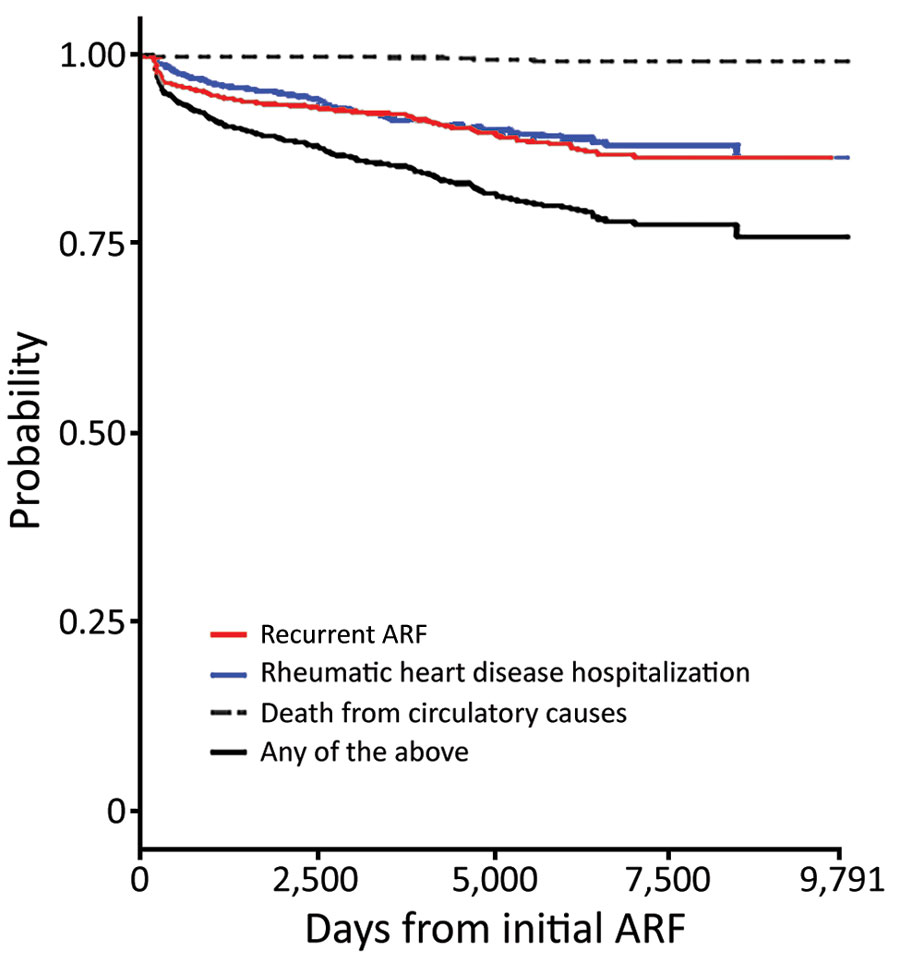Volume 27, Number 7—July 2021
Research
Ethnically Disparate Disease Progression and Outcomes among Acute Rheumatic Fever Patients in New Zealand, 1989–2015
Figure 3

Figure 3. Probability of disease progression to recurrent ARF, hospitalization for rheumatic heart disease, or circulatory death after hospitalization for initial ARF >9,791 days among acute rheumatic fever patients in New Zealand, 1989–2015. ARF, acute rheumatic fever.
Page created: May 15, 2021
Page updated: June 16, 2021
Page reviewed: June 16, 2021
The conclusions, findings, and opinions expressed by authors contributing to this journal do not necessarily reflect the official position of the U.S. Department of Health and Human Services, the Public Health Service, the Centers for Disease Control and Prevention, or the authors' affiliated institutions. Use of trade names is for identification only and does not imply endorsement by any of the groups named above.